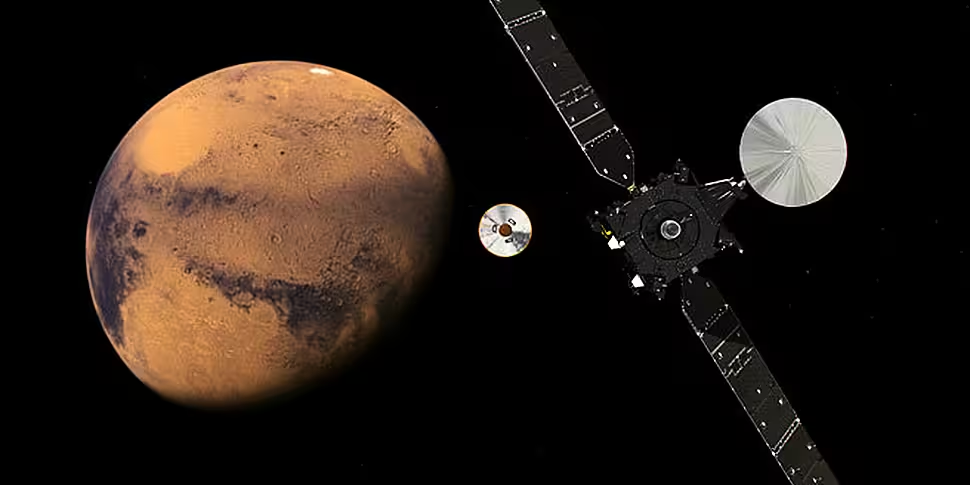A European space probe has landed on the surface of Mars on a mission to look for signs of life.
However, scientists are still waiting for confirmation on Schiaparelli's condition after a six-minute descent using a heatshield, parachute and rocket boosters to slow it down from 13,000mph.
The ExoMars mission's main objective is to look for signs of life on the Red Planet.
But just overcoming the notoriously tricky Martian atmosphere - too thin to rely on a parachute alone; too thick to reliably use thrusters - will be a major achievement.
For the European Space Agency (ESA) the landing is a "technology demonstrator" - a test of the descent system it hopes to use in 2020 to put a robotic rover on the surface.
Schiaparelli's batteries will last just a couple of days and it has only a handful of instruments to monitor the weather.
It crossed 500 million km on its seven-month journey from Earth.
14:48UT: According to nominal timeline, Schiaparelli should have switched off thrusters to touchdown on #Mars surface! stay tuned.. #ExoMars pic.twitter.com/GMSHcD7xUm
— ESA_Schiaparelli (@ESA_EDM) October 19, 2016
Meanwhile, the mothership that carried Schiaparelli half a billion kilometres from Earth will begin a series of engine burns to slow it enough to begin orbiting Mars.
Over the next year it will decrease the size of its orbit to just 400km above the surface.
The Trace Gas Orbiter (TGO), as it is properly known, will then begin analysing the make-up of the atmosphere.
Scientists know there are pockets of methane, a gas that should be broken down in less than 400 years in the harsh sunlight of Mars. That suggests it is constantly being replenished from an unknown source.
It may have a geological origin - water mixing with certain rocks or the gas may have a biological source - microbes.
It is unlikely they are alive today because of the high ultra-violet radiation on the surface. More likely the gas was produced by microbes billions of years ago and then trapped by ice and released as it melted.









